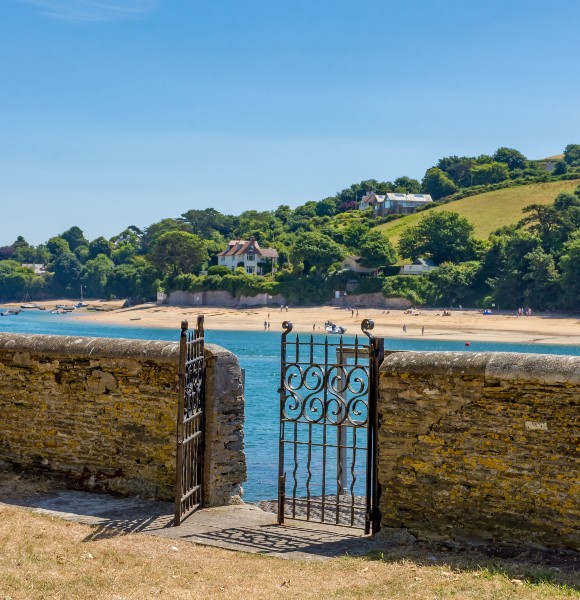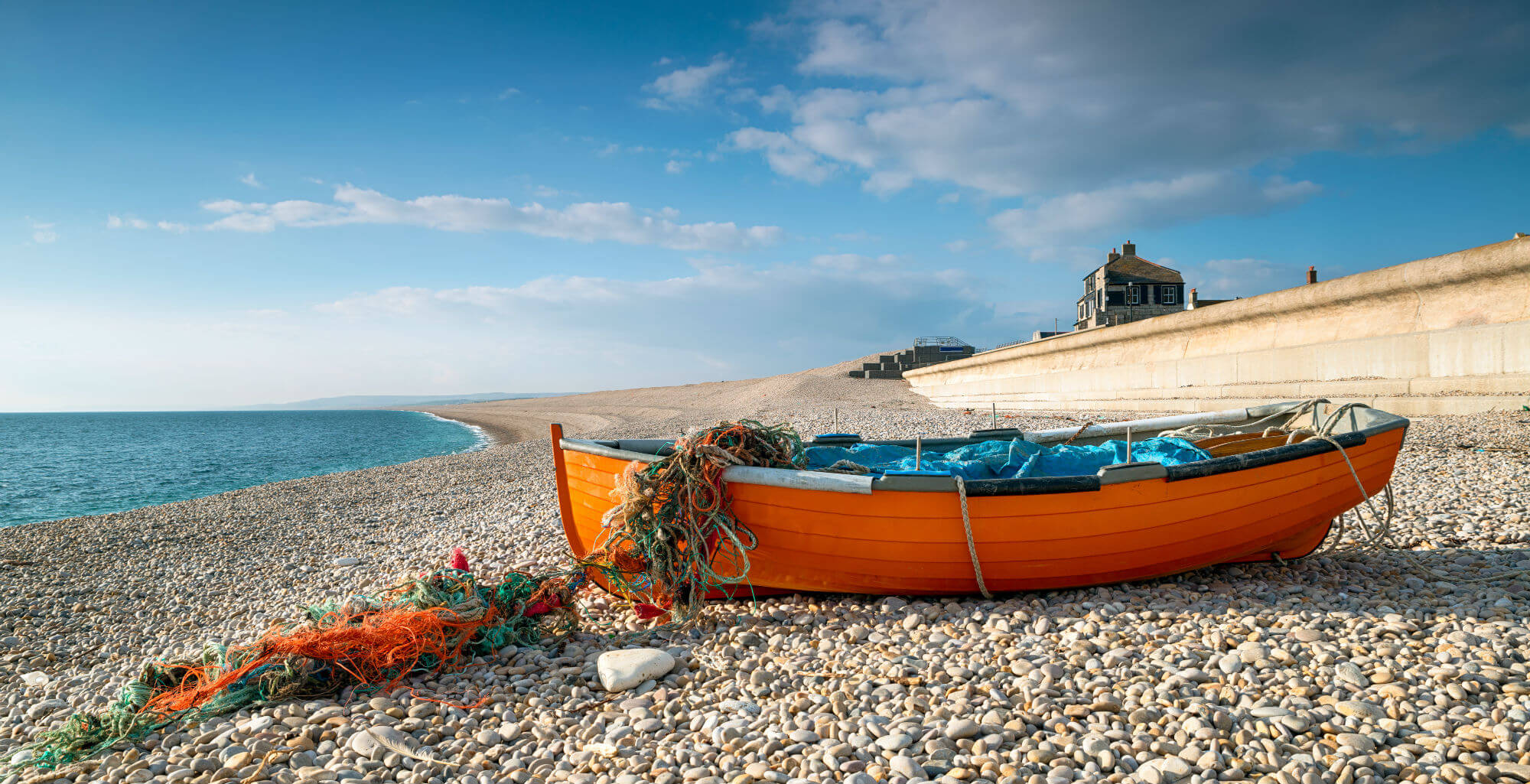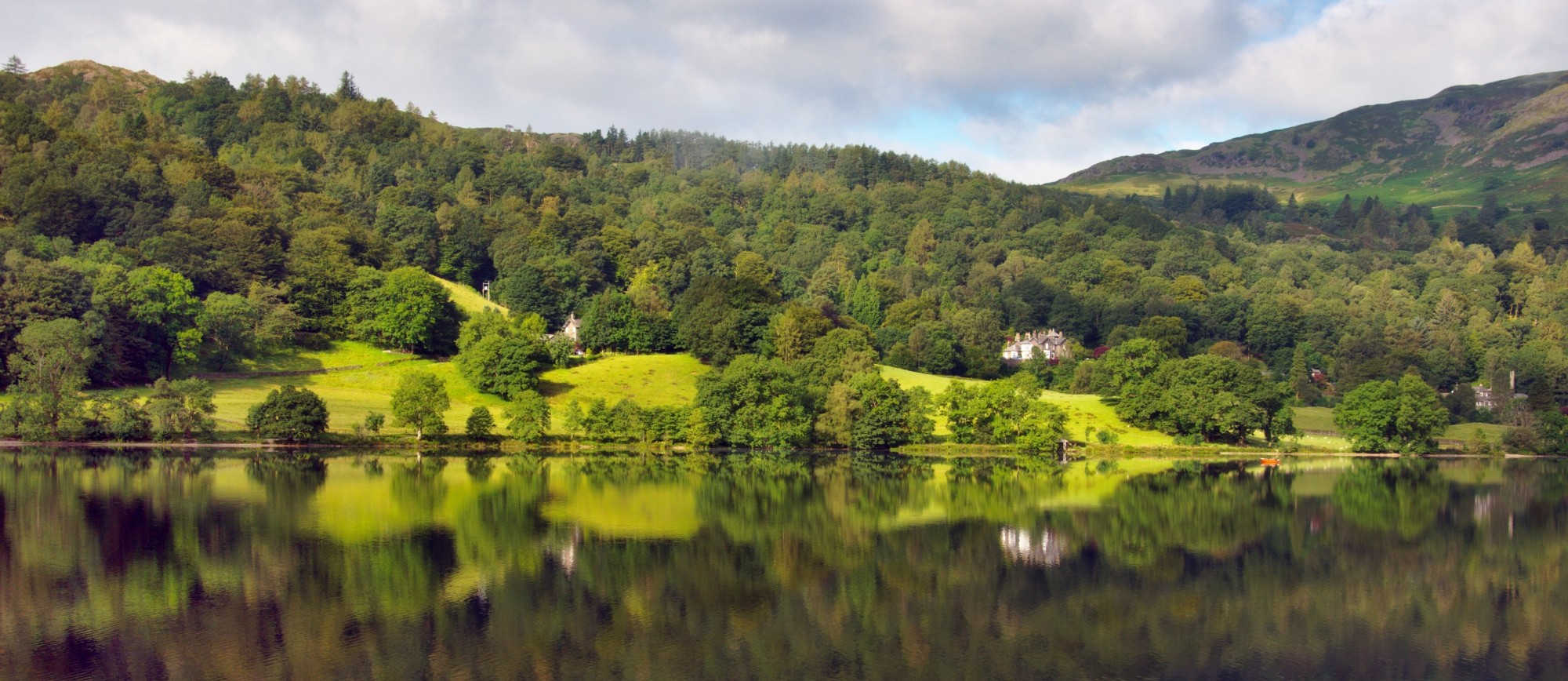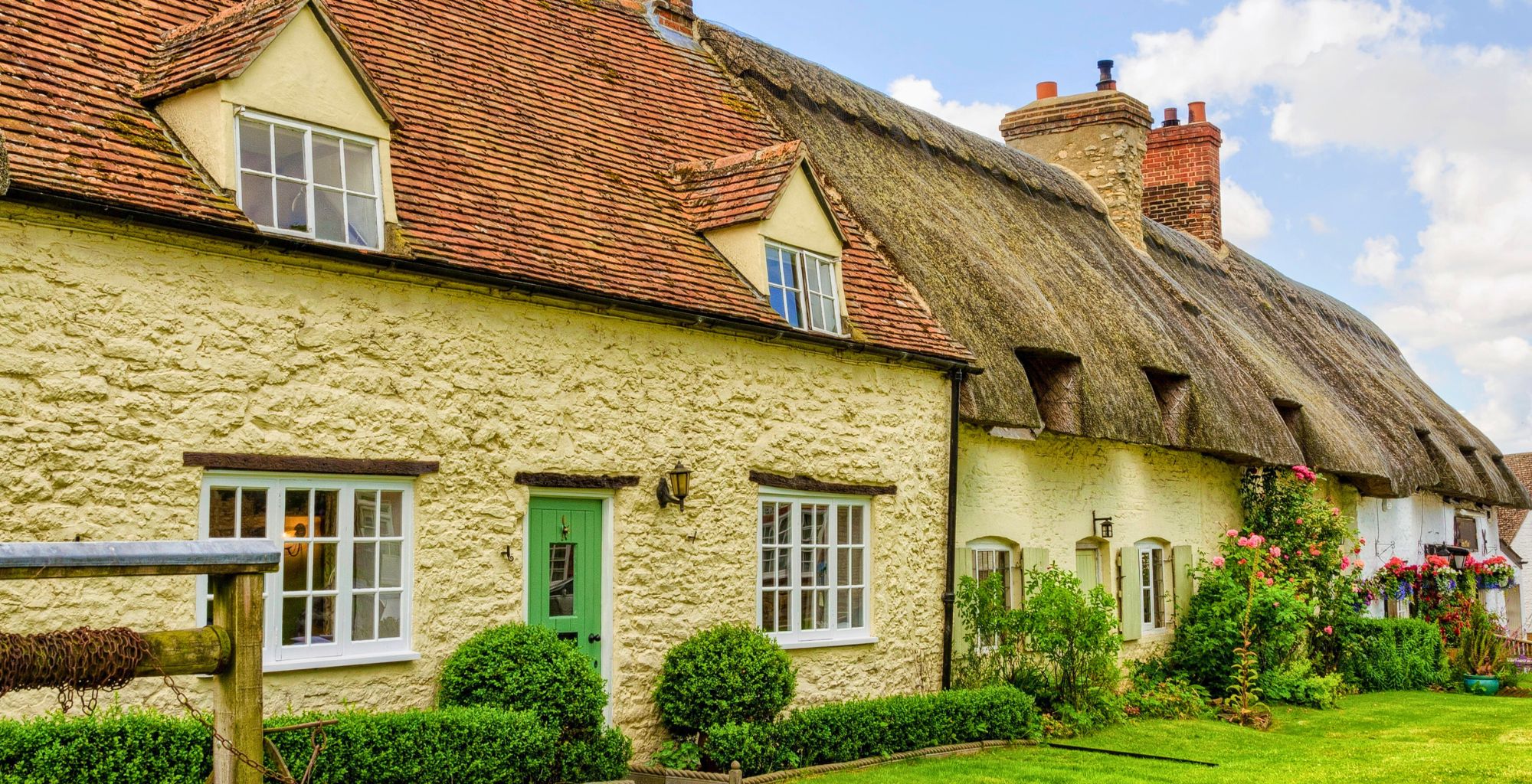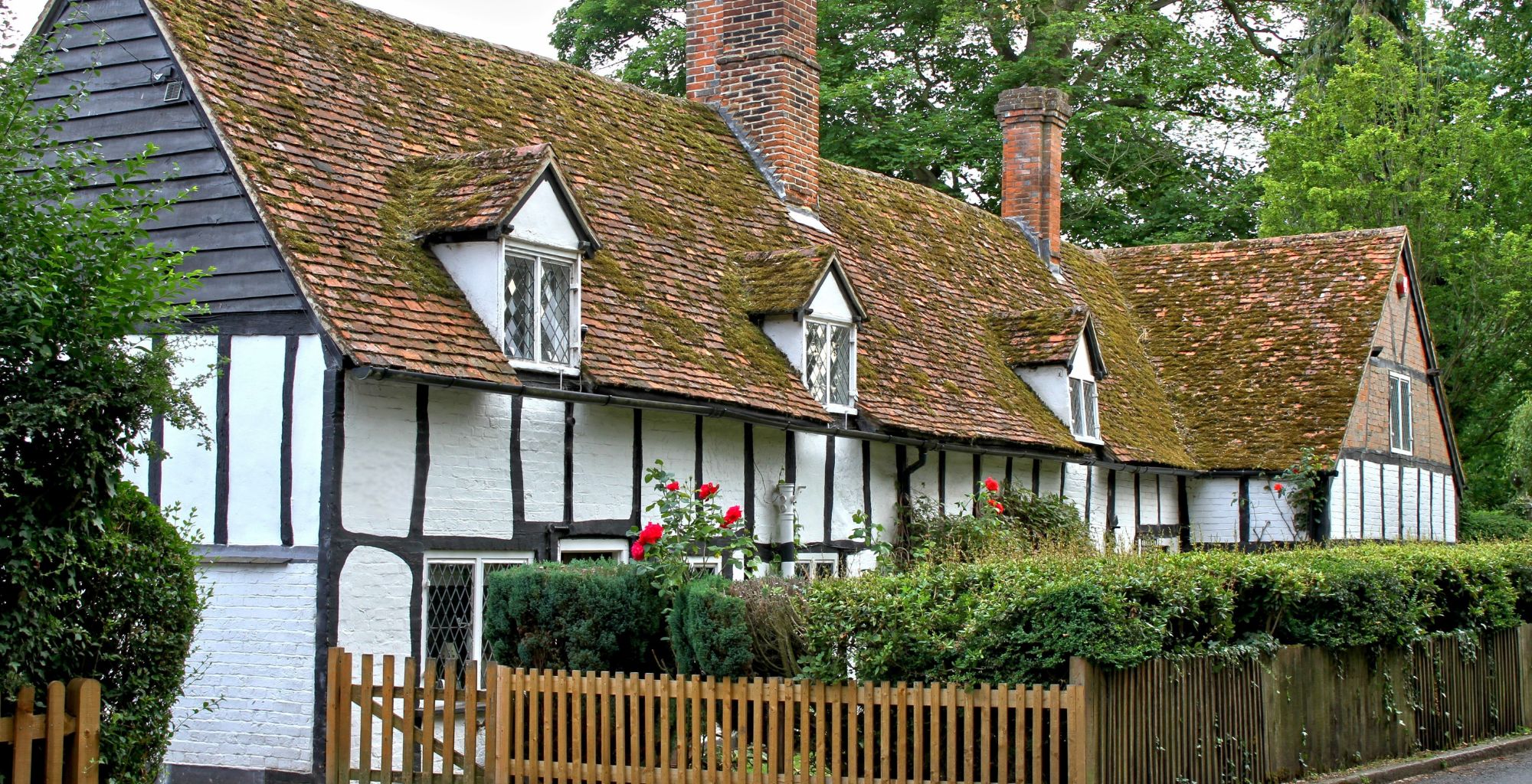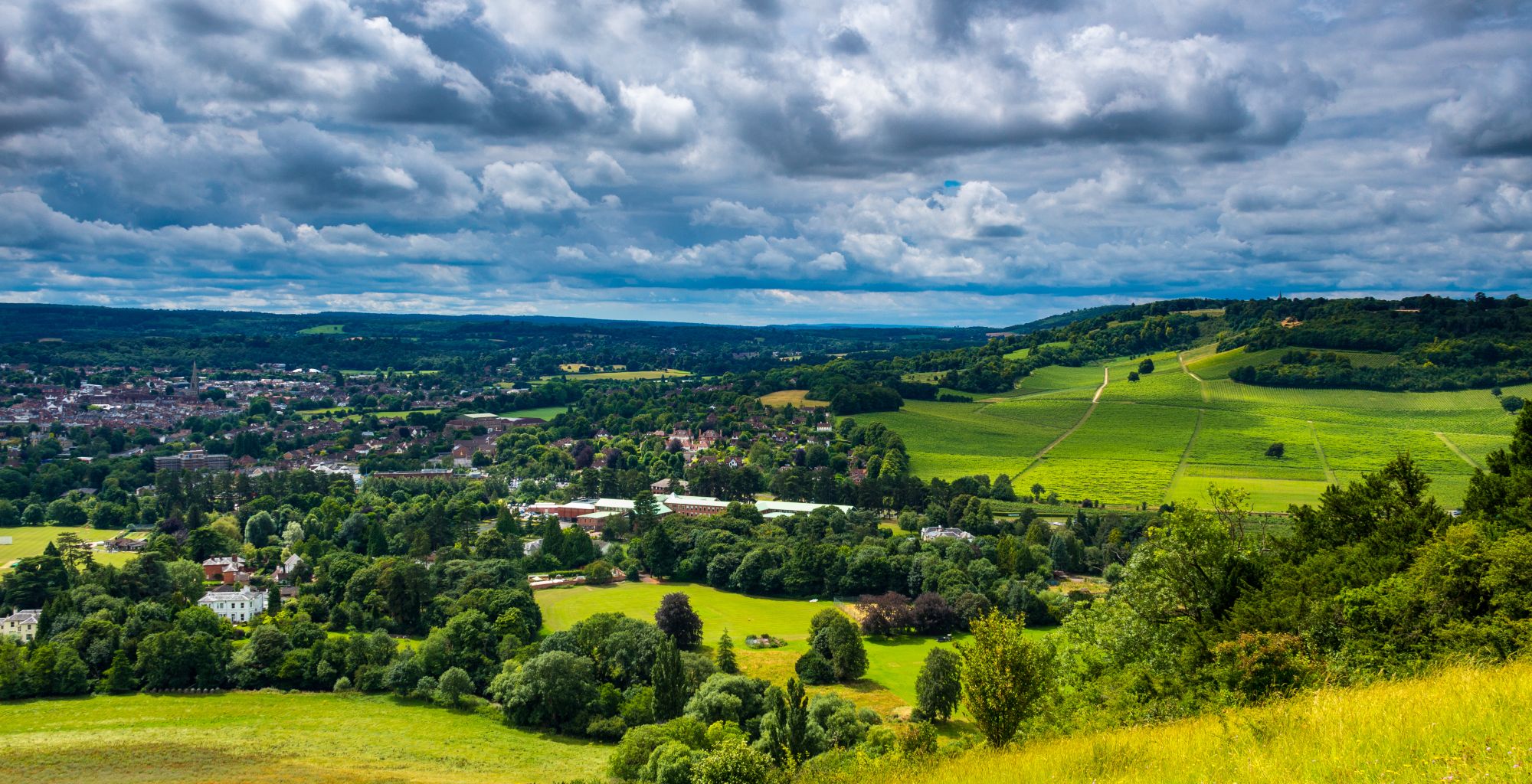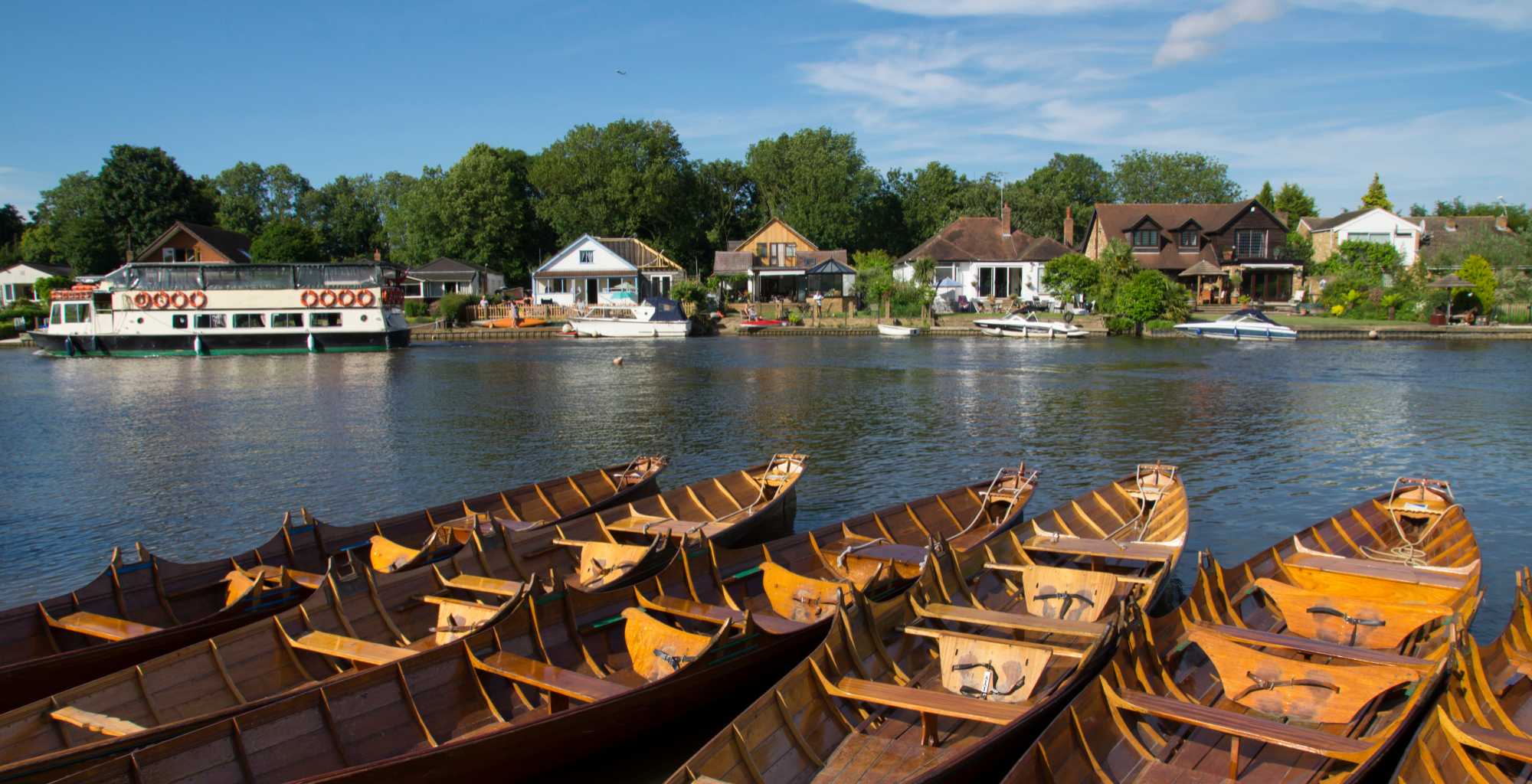Are you looking for the best places to live in Oxfordshire to focus your property search? From bustling market...
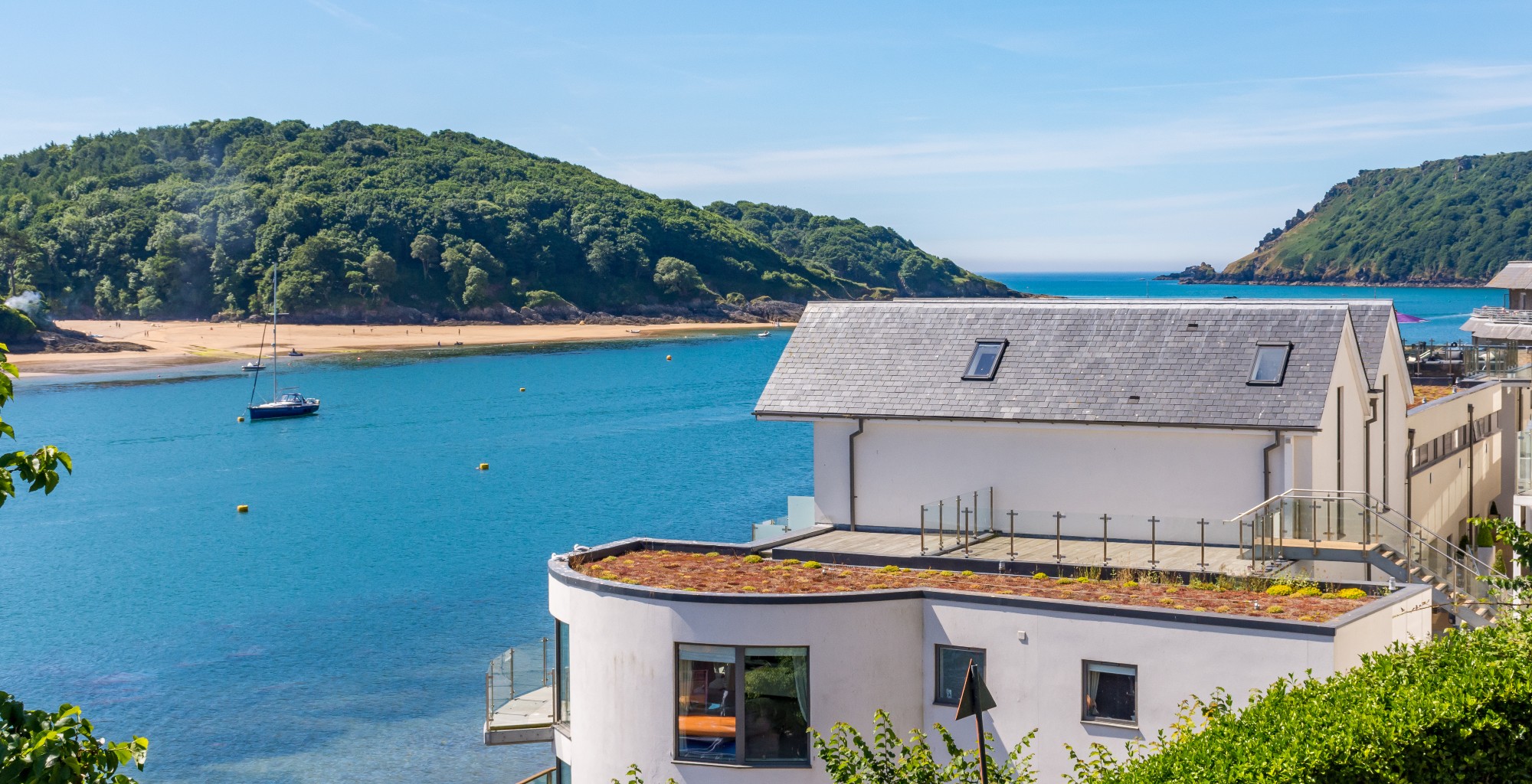
Best places to live in Devon: 12 places to look for a home
Where are the best places to live in Devon? Our local Devon property experts highlight some of the top places to buy a property and why they make such wonderful places to live.
With its stunning coastline, miles upon miles of cliff walks, and sandy beaches, the county of Devon is also home to National Parks that offer the largest open space – some 368 square miles (954 sq. km.) of it – in South West England.
The picturesque charm of the towns and villages that dot this green and pleasant land make it one of the most sought-after places to live in the country.
Whether you are looking for a home on the coast or one that enjoys a setting tucked away in rural tranquillity, a grand country house or a picture-perfect thatched cottage, Devon is likely to offer something for practically every buyer’s taste.
The following 12 locations are places our Devon property finders would include on a list of the best places to live:
Bampton
Key facts about Bampton, Devon
- Amenities: Bampton is a small town with a surprisingly wide range of shops and amenities for its size. That includes two modest supermarkets – one of which incorporates a Post Office – a greengrocer, butcher, bakery, fish bar and hairdressing salon. There is also an NHS doctors’ surgery and a pharmacy. A more comprehensive range of amenities can be found in Tiverton – just 8 miles to the south;
- Education: the local Bampton Church of England Primary School is rated “Good” by the latest Ofsted report as is the nearest state secondary school Tiverton High School for pupils aged 11 to 16. Tiverton is also home to the leading independent Blundell’s School – founded in 1604 – which now teaches more than 600 pupils (co-educational, day and boarding), including its high-performing sixth form;
- Transport links: although it sits just to the south of the wilds of Exmoor National Park, Bampton is also strategically situated with relatively easy access (via Tiverton) to Junction 27 of the M5 motorway, which links the Midlands and the southwest of England. Thanks to its connection to the national motorway network, the 191-mile road journey to central London can be driven in a little over three and a half hours. For regional, European, and international flights to North America, Exeter Airport is some 30 miles away (a drive of around half an hour or so);
- Trains: the principal railway connection is the mainline station at Tiverton Parkway – on the line between Bristol and Exeter. Great Western Railways (GWR) services include fast trains from Tiverton Parkway to London Paddington in around two and a half hours.
Why live in Bampton?
Bampton is a small town in mid-Devon, close to the border with the county of Somerset and in a rural area south of the moorland of Exmoor National Park.
Its Royal Charter, granted by King Henry III in 1258, recognised its historic status and importance as a busy market town featuring sheep and pony sales. The Brampton Charter Fayre continues to be held every October.
The central part of the town is designated a conservation area, with more than 100 listed buildings around and about. Many are built in the local stone, which was quarried just outside the village.
Bampton is a charming town in a prime mid-Devon location, positioned in the tranquillity of a wooded valley through which the River Batherm runs as a tributary of the Exe.
Tiverton
Key facts:
- Amenities: Tiverton boasts all the amenities you might expect of a mid-sized rural English town – the latest census recorded a population of 22,291. It hosts a wide range of independent enterprises, from antique shops to bookshops, beauty salons to chemists, clothes shops and boutiques, car workshops, computers, crafts and gifts, hardware stores, florists, and supermarket chains. Not only are there NHS doctors’ surgeries and pharmacies, but also Tiverton and District Hospital (a unit of Royal Devon University Healthcare);
- Education: there are at least five state primary schools within the local catchment area, all of which are rated “Good” by Ofsted. A similar rating is achieved by Tiverton High School, which admits pupils between the ages of 11 and 16. Tiverton is also home to the leading co-educational, day and boarding, independent school Blundell’s School, which was founded in 1604 and has a current roll of more than 600 pupils;
- Transport links: the town is just 8 miles or so to the west of Tiverton Parkway and its access to the main M5 motorway at Junction 27. The motorway links the Midlands with Bristol, where the M5 also meets the M4, the principal east-west route from London to South Wales. Journey times by road to central London are a little over three and a half hours for the 185-mile journey. The M5 motorway also offers fast and easy access to Exeter Airport (23 miles and a drive of around half an hour) with its destinations throughout the UK, Europe, and North America;
- Trains: Tiverton Parkway is the mainline railway station on Great Western Railway’s (GWR) services between Bristol and Exeter. But there are also reasonably frequent and fast direct services to London Paddington – a train journey of around two and a half hours.
Why live in Tiverton?
As we have seen, Tiverton is a small town with excellent, strategic transport links to the national motorway network and by rail to London. It is also set in the glorious countryside of mid-Devon.
Thanks to its rural surroundings yet excellent transport links, some guides describe Tiverton as the ideal place for a quiet life. This charming market town – bustling with many independent stores and shops – tops many lists of the best places to live in the county.
Tiverton is a vibrant market town typical of this part of Devon. It boasts several romantic castles – such as the glorious Tiverton and Bickleigh Castles – with much of its historic past likely to echo in your footsteps as you stroll along the towpath of the nearby Great Western Canal.
Exeter
Key facts:
- Amenities: Exeter is a vibrant city and host to all the branded stores and independent shops. It has a population of 130,800 at the last census. The presence of the University, though, also gives it a more sophisticated, relaxed, and cosmopolitan atmosphere, especially in its plethora of coffee shops, bars, and restaurants. It is very much the county town of Devon and the major hub for enterprise (tech industries and renewable energy in ascendant);
- Education: you will be spoilt for choice by Exeter’s range of highly rated state schools, nationally acclaimed independent schools, and its Russell Group university. For example, at least four of the state primary schools in the city are rated “Outstanding” by Ofsted, as is the academy Exeter Mathematics School for sixth formers. On the fringes of the city itself, Colyton Grammar School, founded in 1546 in the village of the same name, is also rated “Outstanding”. Exeter School, The Maynard School (for girls), and Exeter Cathedral School are all independent schools renowned not just in Devon but throughout the south of England. In the tertiary sector, Exeter University boasts a total student enrolment of more than 22,500;
- Transport links: Exeter is at the southwestern end of the M5 motorway, which connects the city to the heart of the Midlands and the wider national road network. Near the city of Bristol, the M5 also connects with the country’s major east-west arterial motorway, the M4, which runs from London to South Wales. The distance by road between Exeter and central London – using both these motorways and the dual carriageways of the A303 – is approximately 173 miles. It can be driven in around three and a half hours, depending on the traffic. Exeter Airport is on the outskirts of the city, some 15 minutes (5 miles) by road;
- Trains: Exeter St David’s railway station is on the mainline to destinations terminating at London Paddington – with the fastest services making that journey in a little more than two and a half hours. There is another mainline station, Exeter Central, which serves many destinations throughout Devon and Cornwall – the coastal resort of Torquay, for example can be reached from here in little more than an hour.
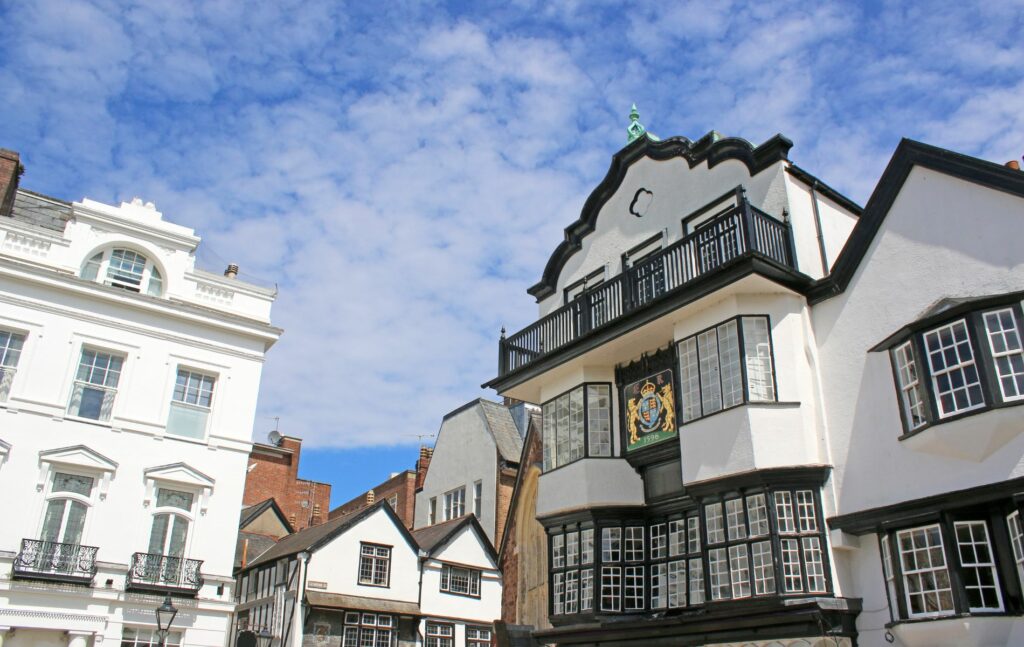
Why live in Exeter?
It is little wonder that Exeter proves such a popular place to live. It is a thriving, bustling, university city strategically placed for transport links to the whole of the country. Yet it offers easy access to the tranquil coves and sandy beaches of the south coast of Devon and Cornwall together with the more rugged open spaces of Dartmoor National Park.
From its beautiful Cathedral to the trendier haunts of the Quayside, Exeter is positively throbbing with life and enterprise. In contrast, a quieter life can be found in any number of the quaint villages surrounding the city.
Topsham
Key facts:
- Amenities: Located on the estuary of the River Exe, just five miles to the southeast of the City of Exeter, Topsham is a small but busy town with a distinct village feel, popular with locals and visitors alike. The latter may be attracted to the several gift shops, art galleries and antique dealers, but there are also plenty of independent shops, pubs and restaurants, and a Saturday Farmers’ Market. The town boasts its own pharmacy and NHS doctors’ surgery, while the full retail experience can be found just up the road in Exeter itself;
- Education: there is a choice of state primary schools rated “Good” by Ofsted, but Lady Seaward’s Church of England Primary School in nearby Clyst St George (1½ miles away) is rated “Outstanding”. For secondary education pupils aged 11 and upwards, the choice will certainly be the City of Exeter. In the state sector, schools such as Colyton Grammar School and Exeter Mathematics School (for sixth formers) are rated as “Outstanding”. Exeter School, The Maynard School (for girls), and Exeter Cathedral School are all independent schools second to none, whether in Devon or throughout the south of England;
- Transport links: situated as it is between Exeter and Exmouth, Topsham benefits from the excellent road traffic connections from the latter city – specifically, the M5 motorway, which links directly to the major conurbations of the English Midlands. Using the motorway network and the import A303 trunk road, the 173-mile drive to central London will take around three and a half hours – depending on the traffic. Nearby Exeter International Airport has fast connections not only to London’s Heathrow and Gatwick but multiple destinations throughout Europe and North America;
- Trains: from Topsham railway station, there are local services on the Tamar Valley Line to Plymouth and on the Dartmoor Line to Exeter. Five miles away at Exeter’s two mainline railway stations, there are local services to destinations throughout the southwest (from Exeter Central) and from Exeter St David’s to London’s Paddington (with the fastest journey times of a little over two and a half hours).
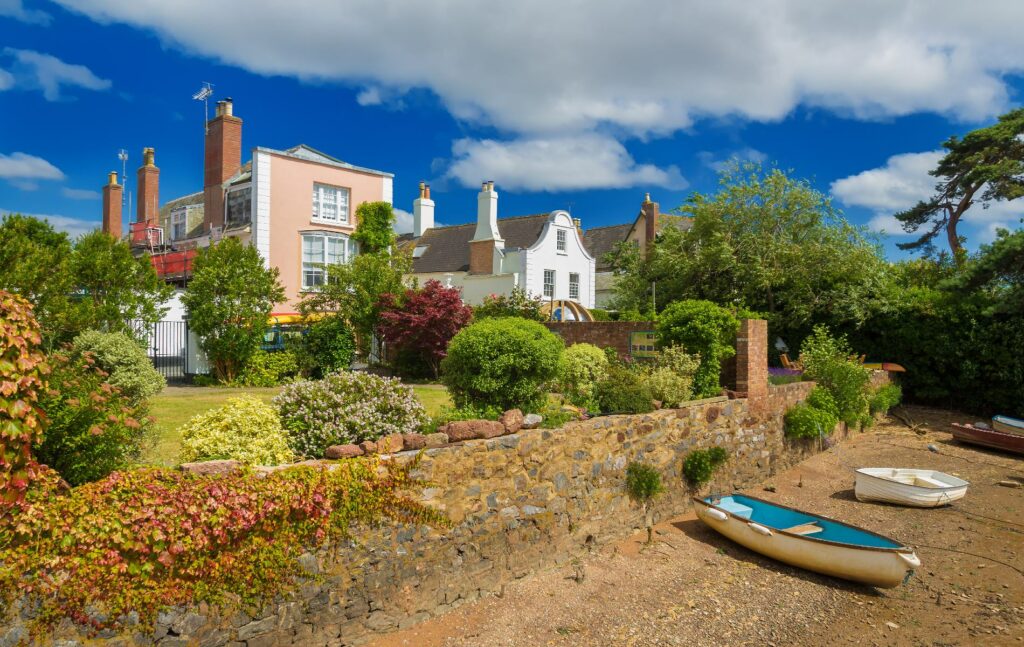
Why live in Topsham?
The Times newspaper has described Topsham as one of the best places to live in the UK, praising it as “a town with a community heart” close to a beautiful coastline and the countryside.
Topsham is a peaceful community for those looking for a quieter life yet remains just a few miles away from all the vibrant City of Exeter has to offer.
Topsham itself has around 50 independently owned shops lining its quaint and historic streets. In addition, there are fine dining establishments at restaurants such as The Galley and the Salutation Inn or the Passage House Inn near the sailing club on the estuary itself.
Attractive architecture abounds – whether in the Dutch-style buildings evocative of the town’s importance as a trading port or the Georgian and Edwardian homes of its wealthy merchants.
Budleigh Salterton
Key facts:
- Amenities: befitting a small coastal town popular with visitors and locals alike, there are several cafes, tea shops, and gift shops, along with a few small supermarkets, a convenience store, a delicatessen, butchers, fish and chip shop, and menswear outlet. For more shopping opportunities, the nearest hub is the City of Exeter, just 14 miles or a half-hour drive away. There is an NHS medical practice and four pharmacies within a five-mile radius of the town;
- Education: the three state primary schools in Budleigh Salterton are each rated “Good” by Ofsted. The highly rated (“Outstanding” according to Ofsted) Colyton Grammar School is approximately 17 miles away (a 30-minute drive). Closer to the town, there is a large state secondary school (ages 11 to 18), for some 2,000 pupils, in the shape of Exmouth Community College, some six miles or a 12-minute drive from Budleigh Salterton. Leading independent schools are readily accessible a short drive away in and around the city of Exeter – namely, Exeter School, The Maynard School (for girls), and Exeter Cathedral School;
- Transport links: although Budleigh Salterton is on the East Devon coast, it remains relatively well connected to the major road networks via the M5 at Exeter (some 14 miles away) or the A30 trunk road at Honiton (18 miles away). Using either of these routes, central London is very roughly 200 miles away – a drive of some three hours and 40 minutes, depending on traffic congestion (likely to be worse during the summer season);
- Trains: Budleigh Salterton is perhaps less well served by the rail network. The nearest station is at Exmouth – some six miles away – and from there to the mainline stations in Exeter. From Exeter St David’s, the fastest services to London Paddington can be as fast as around two and a half hours. Trains from Exeter Central railway station serve multiple local destinations throughout Devon and Cornwall.
Why live in Budleigh Salterton?
Budleigh Salterton is included in the guide to the best places to live in the UK, named as an attractive small town close to the sea that appeals to retirees and young families.
Situated on the eastern edge of the county, within the East Devon Area of Outstanding Natural Beauty, many homes in Budleigh Salterton have stunning sea views across a wide pebble beach.
In addition to an array of independent shops that will cater for your immediate needs, Budleigh Salterton is also building a cultural reputation through its classical music and literary festivals
Sidmouth
Key facts about Sidmouth:
- Amenities: Sidmouth boasts the range of amenities to be expected of a medium to large seaside town – supermarkets (Waitrose and a Co-op), farmers’ market, post office, coffee shops, restaurants and pubs, gift shops, galleries and antique shops, pharmacy, dentist, and an NHS medical practice. The much larger business hub of Exeter is a mere 16 miles away – a drive of approximately half an hour or so;
- Education: the local state primary school (ages 2 to 11), Sidmouth Church of England (Voluntary Aided) Primary School, and secondary Sidmouth College (ages 11 to 18) are both rated “Good” by Ofsted. Families in search of education for their children at a leading independent school will have the choice of excellent institutions such as Exeter School, The Maynard School (for girls), and Exeter Cathedral School;
- Transport links: although its coastal location might seem to leave the town a little out of the way, its transport links are good – thanks to connections to the M5 motorway network at Exeter or the trunk roads A30 and A303 at Honiton (10 miles to the north). Using either of these routes, the 170-mile journey to central London may be driven in around three and a half hours. Exeter Airport – with flights to both Heathrow and Gatwick, not to mention multiple destinations throughout Europe and North America – is a short 25-minute drive away (some 12 miles);
- Trains: the nearest mainline railway station is at Honiton, where South Western Railway services offer a journey time of around three and a half hours to London Waterloo. From the same station, services to Exeter St David’s take approximately half an hour.
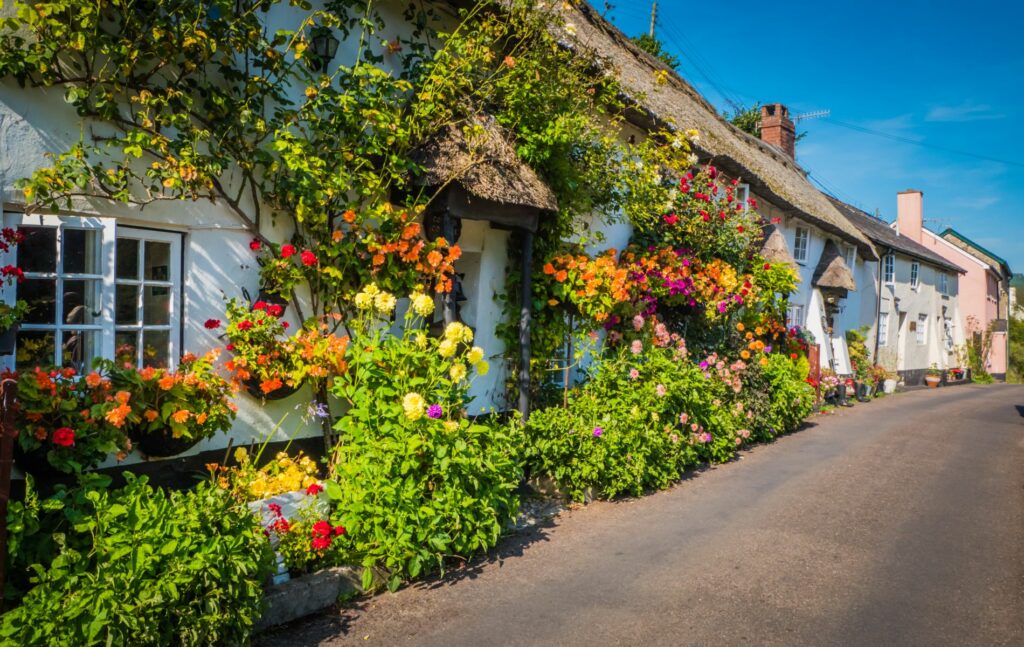
Why live in Sidmouth?
Sidmouth is a medium to large seaside town popular with locals and visitors, whatever the season. It has award-winning Blue Flag beaches and events and festivals that take place all year round. One of the most popular attractions in the region is the Sidmouth Donkey Sanctuary.
The sense of community is underlined by the many cafes and hotels dotted around the town, which boasts a Regency history and well-manicured gardens where the flowers seem permanently in bloom. It is the perfect setting for Sidmouth’s many events and festivals that occupy the annual calendar.
Thorverton
Key facts:
- Amenities: Thorverton has everything you could want from a village – a pretty little village square, a stream and lots of local amenities. These include a doctor’s surgery, Post Office, a church and a great village hall complete with a cinema and the Berry Dairy village shop. You can choose between The Exeter Inn or The Thorverton Arms for that village pub experience. The city of Exeter is just 8 miles to the south and offers all the retail and cultural highlights you could want;
- Education: the local Thorverton Church of England Primary School is rated “Good” by Ofsted. An alternative primary school, The Duchy School, in the village of Bradninch, just 5½ miles (9 km) away, is rated “Outstanding”. The state secondary St James School – some 8 miles away on the outskirts of Exeter – is also rated “Good”. In the independent sector, the acclaimed Blundell’s School in Tiverton (9 miles away) would make an excellent choice, whatever age your children;
- Transport links: the principal transport hub is Exeter, just 8 miles south of Thorverton. You can join the M5 motorway towards the Midlands via Bristol, where the network also joins the east west M4 motorway to London. Alternatively, take the A303 trunk road, which later becomes the M3, for the journey into London. With either route, the roughly 177-mile journey is likely to take around 4 hours. Exeter Airport – with flights to both Heathrow and Gatwick, not to mention multiple destinations throughout Europe and North America – is a short 26-minute drive away (some 11 miles);
- Trains: the nearest mainline railway station is Exeter St David’s, which offers regular services to London Paddington – and the fastest journey times of around three and a half hours.
Why live in Thorverton?
The pretty village of Thorverton is approximately 8 miles equidistant between the City of Exeter and the market town of Tiverton. It is an ancient bridging point of the River Exe and forms the hub of a small group of Devon villages – Tiverton, Cullompton and Crediton.
It is the picture-perfect country village, offering a strong sense of local community, independent village shops and pubs, yet all within a short distance of Exeter. Its population is around 1,000 and offers an excellent choice for families and others in search of a slower pace of life surrounded by beautiful countryside.
Homes range from rustic cottages to more stately Georgian houses with newly built homes on the outskirts of the village.
Chagford
Key facts:
- Amenities: Although surrounded by the rugged terrain of Dartmoor National Park, Chagford boasts an impressive array of village shops and amenities including a bakery, delicatessen, grocery stores, wine shop, gift shop, Post Office, book shop, butchers, pharmacy, and NHS medical practice.
- Education: Chagford Church of England Primary School is the village school and is rated “Good” by Ofsted. At the secondary level (for pupils aged 11 to 18), Okehampton College – some 10 miles away – is rated “Outstanding” by Ofsted. A wide choice of well-regarded independent schools – including Exeter School, The Maynard School (for girls), and Exeter Cathedral School – can be found in Exeter, some 21 miles away;
- Transport links: Chagford lies on the northern edge of Dartmoor National Park – this makes the town somewhat remote from larger concentrations of population – yet the City of Exeter is still just 21 miles or so away. From Exeter, there are links to the major motorway and trunk road networks – including the M5 and M4 or the A303 and M3 – that lead the 193 miles or more to central London which will take around three hours and 40 minutes to drive;
- Trains: Exeter St David’s mainline railway station is also where you will find regular and fast train services to London Paddington – a journey time of approximately 2½ hours.
Why live in Chagford?
Chagford is a characterful town situated on the north eastern fringes of Dartmoor National Park. This location benefits from a microclimate that brings more sunshine and less rain than in the west of the Park. For that reason, the town is popular with nature lovers and walkers.
Chagford also boasts its open-air swimming pool, fed by the River Teign that runs alongside. At the same time, locals and visitors can enjoy walks along its banks and around the surrounding countryside. A popular landmark is the National Trust’s Castle Drogo (a fine example of a 20th-century country house overlooking the Teign Gorge).
If ever that far away from it all feeling should ever get too much, you will find it a comfort that the city life of Exeter is only 22 miles (or a 40-minute or so drive) away.
Totnes
Key facts about Totnes:
- Amenities: a wide selection of small, independent shops and stores, including a farm shop, shoe shop, menswear store, cafes, restaurants, and a wine store. A regular Sunday Food and Craft Market is also held every third Sunday of the month. Totnes even boasts its own cinema – that describes itself as “quirky” and more like a Berlin cabaret than a picture house. There is also an NHS medical practice and several pharmacies;
- Education: there are several state primary schools in the catchment area for Totnes, but the Grove School (ages 4 to 11) is rated “Outstanding” by Ofsted. The local state Academy (ages 11 to 18), King Edward VI Community College, is rated “Good” by Ofsted. Leading independent schools – for those in search of private education from primary through to the sixth form – can be found in Exeter (some 30 miles to the north) and include Exeter School, The Maynard School (for girls), and Exeter Cathedral School;
- Transport links: Totnes is mid-way between Dartmoor National Park on one side and the seaside towns of Torquay and Paignton on the other. It is also approximately equidistant between Exeter and Plymouth. Joining the A38 trunk road at Buckfastleigh takes you to the city of Exeter, where road connections to the national motorway network (the M5 to the Midlands and, from there, the M4 to London) are readily accessible. Central London remains more than 220 miles away, a drive of some four and a quarter hours (traffic permitting). Exeter Airport, though, is only 31 miles away (a 40-minute drive) and offers flights direct to both Heathrow and Gatwick, together with multiple destinations throughout Europe and North America;
- Trains: Totnes also enjoys the benefit of its own mainline railway station, so regular, direct Great Western Railway (GWR) services typically reach London Paddington in under three hours.
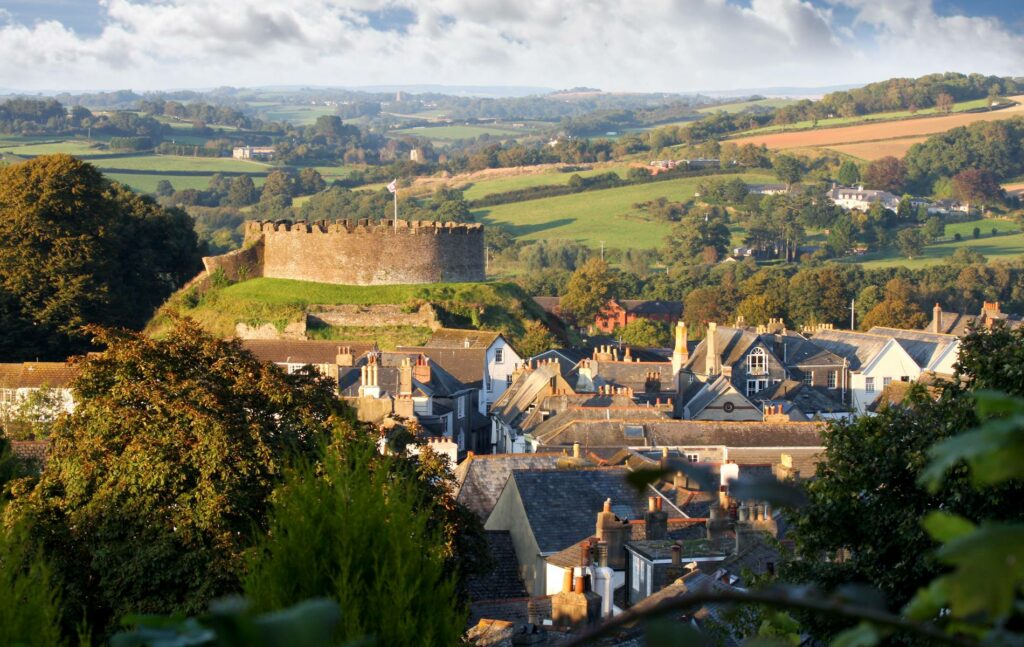
Why live in Totnes?
Totnes is one of the oldest towns in the UK, dating back to Saxon times in 907 AD. By the 12th century, it had become well established as the preeminent market town of this area known as the South Hams of Devon. In addition, it served as a hub for other villages in the neighbourhood, such as Dartington, Staverton, and Harberton.
The classic motte and bailey Totnes Castle continues to dominate the town’s skyline and today gives it a distinctive and special seal quite unlike any other in this part of the West Country – or, indeed, elsewhere in the UK for that matter.
Every Friday and Saturday, the centre of the town continues to host Totnes Market, where you’ll find all manner of local produce on display. Surrounding the market square is a unique selection of independent – and determinedly individual – shops and boutiques. Pubs, cafes, and restaurants offer welcome opportunities to relax and watch the world go by.
Ashburton
Key facts:
- Amenities: what doesn’t this charming village have? There are all the important village features of grocery stores, butchers, delicatessen, Post Office, cafes, restaurants, a pharmacy, and an NHS medical practice. To slake the locals’ or visitors’ thirst, there are two aptly named hostelries, the Old Exeter Inn – which claims Sir Walter Raleigh as an ancient patron – and the themed pub the Hound of the Baskervilles;
- Education: the local Ashburton Primary School continues to be rated “Good” by Ofsted as is the sixth form Atrium Studio College, which is one of the few schools in the country to specialise in the Built Environment (subjects such as architecture, engineering, surveying, and planning). For private education, the leading independent institutions such as Exeter School, The Maynard School (for girls), and Exeter Cathedral School will be found in the City of Exeter some 22 miles to the northeast of Ashburton;
- Transport links: Ashburton sits astride the main A38 trunk road (titled the Devon Expressway), more or less 22 miles equidistant from Exeter in the northeast and Plymouth to the southwest. From Plymouth, “Good” transport links lend access to Cornwall and the far southwest of England. From Exeter, access to the national motorway network provides routes to the Midlands and London. The approximately 200-mile road journey to central London is likely to take around three hours and 40 minutes;
- Trains: less than 10 miles to the south of Ashburton, the mainline railway station at Totnes offers fast train services to London Paddington in under three hours.
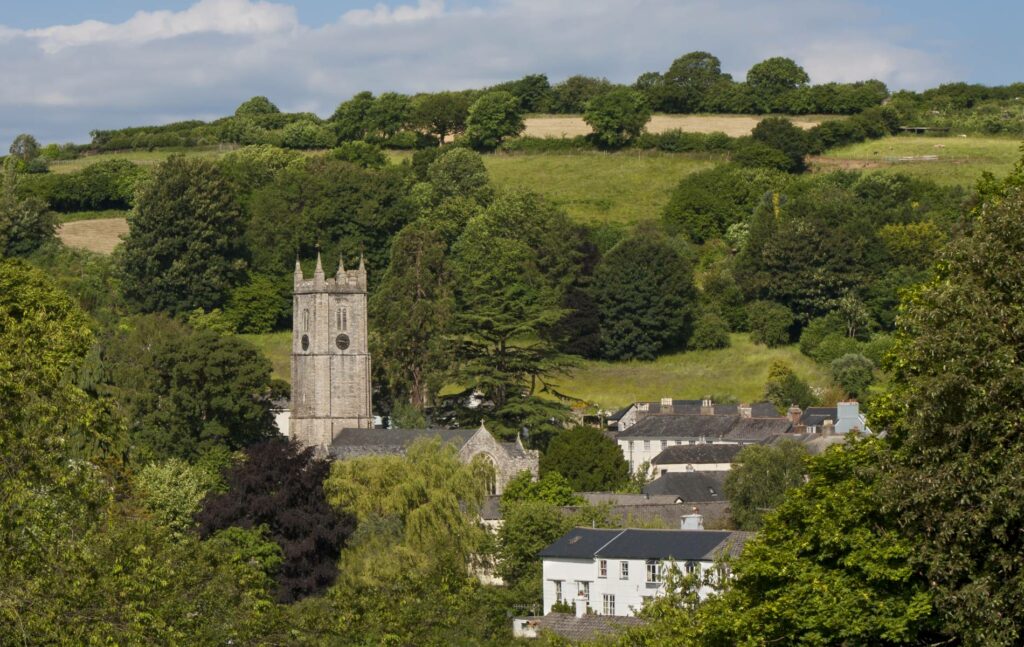
Why live in Ashburton?
Setting up home in Ashburton has many benefits – you are on the very edge of the wide-open spaces of Dartmoor National Park, with the sandy beaches of the South Hams to the east. Plus, you have access to the country’s entire road network thanks to the town’s location on the main Devon Expressway (the A38 trunk road between Exeter and Plymouth).
Little wonder, then, that Ashburton has become an increasingly popular and sought-after place to live. The Times newspaper has voted Ashburton one of the best places to live – for a lifestyle that offers the greatest the great outdoors has to offer.
It’s not just the natural beauty of Ashburton but the vibrant, bustling sense of community that fills its charming streets. Its many galleries, bookshops, cafes and restaurants lend a cultural weight to life in a town that serves as a gateway to Dartmoor.
Kingsbridge
Key facts about Kingsbridge:
- Amenities: Kingsbridge has been named one of the most relaxing small towns in which to live, yet it manages to offer the full range of essential shops and stores – including a Post Office, supermarkets, The Cod Father (takeaway), the Maha-Bharat Indian Restaurant, plus FIKA – a café inspired by Swedish coffee culture which sells delicious coffee. You can also find a bookshop, builders’ merchants, stationers, and a veterinary clinic. The town has an NHS medical centre and several pharmacies. For much greater shopping opportunities, your choice may be Plymouth – some 20 miles or a 40-minute drive away;
- Education: in the state sector, local primary schools are rated “Good” by Ofsted, while Kingsbridge Academy (for pupils aged 11 to 18) is rated “Outstanding”. The latter has benefitted from some £14 million in the past decade for developing new science facilities, a music centre, a sixth form facility, the school’s theatre and up-to-date technology for design and ICT. Plymouth College (20 miles away) is one of the West Country’s leading co-educational, day and boarding, independent schools for pupils aged 3 to 18;
- Transport links: on the northern edge of the Salcombe Estuary and the South Devon Area of “Outstanding” Natural Beauty, the South Hams town of Kingsbridge is naturally somewhat off the beaten track. Nevertheless, some 10 miles to the north of the town, near Ugborough, there is access to the A38 Devon Expressway, with Plymouth in one direction and Exeter in the other, for connections southwest into Cornwall or northeast towards London. The 211-mile road trip to central London will take at least four hours to drive. Exeter International Airport has fast connections not only to London’s Heathrow and Gatwick but multiple destinations throughout Europe and North America;
- Trains: the nearest mainline railway station is at Totnes (13 miles to the north), where regular, direct Great Western Railway services reach London Paddington in a little under three hours.
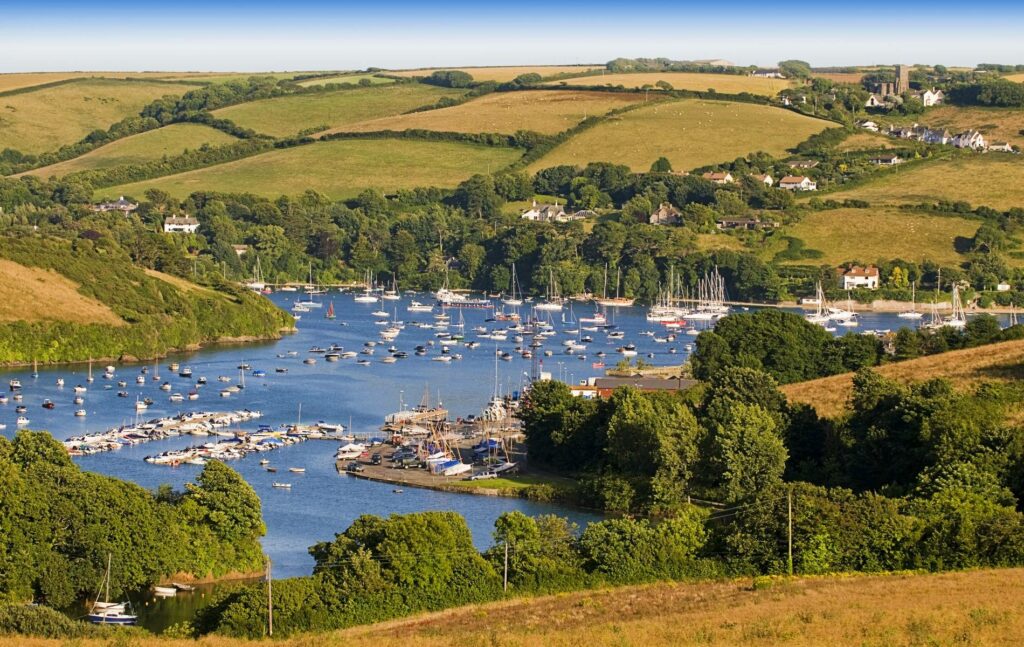
Why live in Kingsbridge?
The South Hams of Devon is known for its mild climate – and Kingsbridge is right in the heart of this district. There is rolling countryside round and about, plus miles of glorious coastal pathways to walk.
The town’s hilly high street is generally buzzing with activity and is lined with a wide selection of almost exclusively independent shops and small stores, cafes, and restaurants. For many, this gives Kingsbridge a livelier atmosphere than nearby Salcombe, which grows quiet during the off-season months.
Salcombe
Key facts about Salcombe:
- Amenities: probably little more than a village, with a single high street, Salcombe nevertheless has a wide selection of essential shops, including two convenience stores (Co-op and SPAR), a library, book shop, beauty salons, men’s, women’s, and children’s clothes shops, gift and craft shops, a Post Office, dentist, NHS medical practice, and pharmacy. There are also two 24-hour cash machines (ATMs) – one opposite the Victoria Inn, the other inside the Fortescue Inn;
- Education: the local state sector’s Salcombe Church of England Primary School (ages 2 to 11) is rated “Good” by Ofsted. Still within the state sector, Kingsbridge Academy (approximately 6 miles away or a 13-minute drive) is rated “Outstanding” by Ofsted. The nearest independent school of note is the highly regarded Plymouth College – a co-educational, day and boarding, independent school for pupils aged 3 to 18;
- Transport links: Salcombe is on the south coast of Devon’s South Hams – by definition, therefore, somewhat off the beaten track. Travel westwards into Cornwall via Plymouth, some 25 miles away, and north via Totnes to the A38 Devon Expressway and Exeter and its connections to the national motorway network. Central London is just over 220 miles by road – a journey of almost four and a half hours. Exeter International Airport is some 49 miles away but offers fast connections not only to London’s Heathrow and Gatwick but also to multiple destinations throughout Europe and North America;
- Trains: Totnes (19 miles to the north) is the nearest railway station, where regular, direct Great Western Railway services reach London in around three hours.
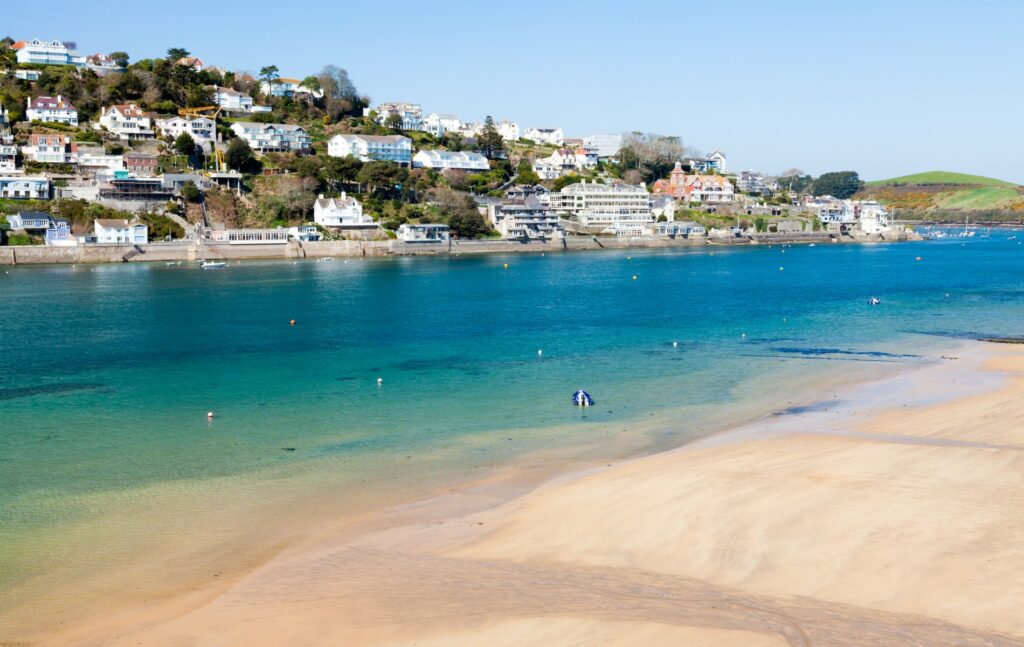
Why live in Salcombe?
Not only has Salcombe been voted one of the UK’s most beautiful holiday locations, but it also has for many years attracted more than its fair share of wealthy and well-heeled residents. As a result, it has long been regarded as one of the most expensive locations to live in the Southwest of England. That is why some have even dubbed the place “Chelsea-on-sea”.
The vibrant harbour-side town overlooks the stunning Kingsbridge Estuary and hosts an array of independent shops, boutiques, bars, and restaurants.
Find the best places to live in Devon
With a professional Property Finder acting on your behalf you can find the best place to live in Devon to suit your individual preferences and requirements.
Learn more about how a local expert can provide guidance and assurance when sourcing and acquiring property in Devon – get in touch.
